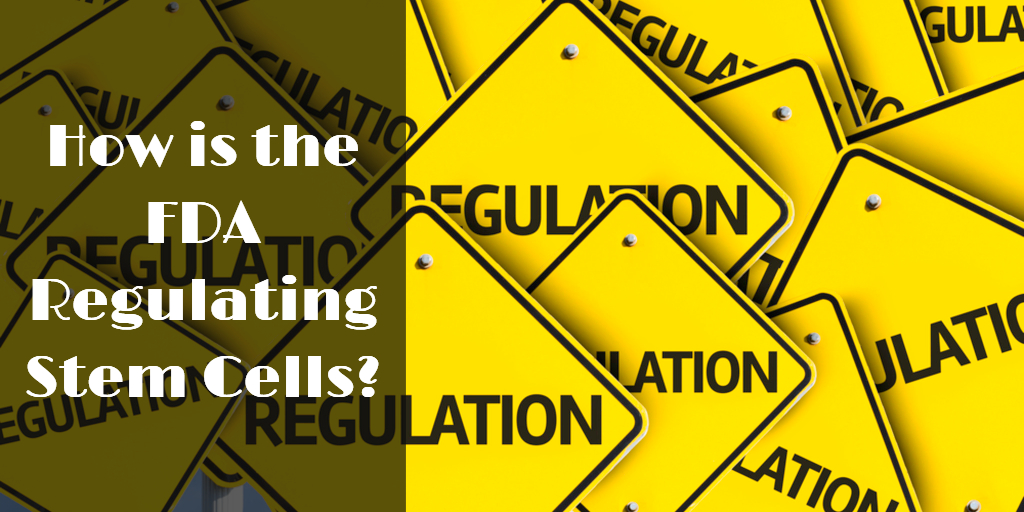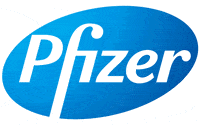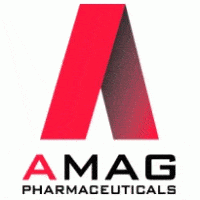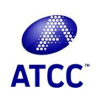 On September 12-13th, 2016, the FDA hosted a public hearing to review draft guidances pertaining to the FDA regulation of stem cells.
On September 12-13th, 2016, the FDA hosted a public hearing to review draft guidances pertaining to the FDA regulation of stem cells.
More specifically, the hearing addressed the regulation of human cell and tissue-based products (HCT/Ps), defined by the FDA in § 1271.3(d) as “articles containing or consisting of human cells or tissues that are intended for implantation, transplantation, infusion, or transfer into a human recipient.”
The event was widely attended by representatives from across the cell therapy industry, with nearly 500 of individuals attending the event and thousands more watching the live stream. There were also 90 speakers at the event who shared varying thoughts pertaining to the FDA regulation of stem cells.

Consequently, the FDA had to hold the public hearing at the Masur Auditorium on the campus of the National Institutes of Health, in Bethesda, Maryland.
It is my opinion that the large turn-out for the event was a successful effort to communicate patient and industry concerns to the FDA and a way to indicate that more input is needed in the regulatory process.
To understand the historical significance of event, read the recent article “Your Ultimate Guide to the FDA Public Hearing on “Draft Guidances” Regulating Cells and Tissues.”
Four Draft Guidances Pertaining to FDA Regulation of Stem Cells (Part 15)
The four FDA draft guidances that are currently under review are:
- “Same Surgical Procedure Exception under 21 CFR 1271.15(b)
- “Minimal Manipulation of Human Cells, Tissues, and Cellular and Tissue-Based Products; Draft Guidance for Industry and Food and Drug Administration Staff”
- “Human Cells, Tissues, and Cellular and Tissue-Based Products (HCT/Ps) from Adipose Tissue: Regulatory Considerations; Draft Guidance for Industry”
- “Homologous Use of Human Cells, Tissues, and Cellular and Tissue-Based Products; Draft Guidance for Industry and FDA Staff”

You can also read the full FDA draft guidance document by clicking this link (“Minimal Manipulation of Human Cells, Tissues, and Cellular and Tissue-Based Products: Draft Guidance“) or the HCT/Ps Draft Guidance image below.

Format of the FDA Public Hearing on Regulation of Stem Cells (Sept 12-13, 2016)
Interestingly, the FDA put microphones in the aisles for the event, but no public comments were allowed. Only the FDA representatives were allowed to ask questions. With several “no shows” for speakers, I had hoped that the FDA would use the time for public comments, but instead, there was additional break time alloted.
During these breaks, FDA representatives headed to a back room, while the attendees milled about.
Importantly, speakers were kept to strict time limits (5 minutes for individuals and 8 minutes for organizations), tracked by a stop watch on the speaker podium and enforced by a FDA representative sitting in the front center row. While the time allocations per person were extremely short, the limits allowed the event to run smoothly and ensured that each presenter had access to equal stage time in front of FDA decision-makers.
The first day was largely composed of individual industry stakeholders, companies, and organizations. The second day included a number of stem cell patients who spoke about their experience.
While the FDA regulation of stem cells cannot based on individual patient stories, these stories provided a valuable context for the scientific findings presented by other individuals and were clear evidence of the “unmet medical need” that was discussed by those advocating for a “middle ground pathway.”
You can click here to watch a live replay of Day 1 of the event (September 12, 2016) or Day 2 of the event (September 13, 2016).
FDA Regulation of Stem Cells Explored in Historic Public Hearing
Over two marathon days, presenters shared a range of different perspectives on the FDA regulation of stem cells. However, there were also a lot of points of agreement.
Specifically, I believe that everyone in the room was in agreement that human cell and tissue-based products (HCT/Ps) should be allowed for patient use when there is robust scientific evidence to support it and a strong safety profile.
As Dr. Weissman of the FDA stated in his Keynote Address, “For cell therapies, gathering of scientific evidence is of paramount importance.”
While many individuals shared different perspectives on how to accomplish this goal, the importance of balancing patient autonomy with rigorous scientific data was a point of general agreement.
Indeed, the purpose of the FDA guidelines is to promote “consistent and regulated use” of human products within commercial applications.
While all were in agreement that the FDA needs to foster innovation while protecting patients, the points of contention emerged when the technicalities of how to accomplish this goal were discussed.
This is not surprising, given the complexity of cell therapies under development. At this event alone, a wide range of tissue sources were discussed (adipose tissue, amniotic tissue, bone marrow, umbilical cord blood, and more), as well as a diverse range of cell types (mesenchymal stem cells / medicinal signaling cells, adipose-derived stem cells, hematopoietic stem cells, and more).
Complexities Surrounding FDA Regulation of Stem Cell Therapies
Indeed, there are a number of complex points to take into consideration when considering the regulation of human cell and tissue-based products (HCT/Ps).
First, FDA is in an extremely difficult position, because the FDA is only minimally rewarded for promoting scientific progress, while it is heavily faulted for allowing dangerous products to market. Indeed, the FDA has been heavily faulted for the 35 drugs that it had to recall from the U.S. market since the 1970s. Therefore, I fully understand why FDA representatives tends to favor substantial regulatory hurdles.
Second, as Dr. Weissman of the FDA pointed out in his Keynote Address, the term “stem cell” is often misused, often being used to describe “mixtures of cells.” This is a key point, because the mechanism of action of a single cell type may vary substantially if the cell population also includes a range of other cell types.
Similarly, Dr. Arnold Caplan, widely regarded as the “Grandfather of MSCs”, urged in his presentation that the FDA (and the scientific community at large) stop referring to MSCs as “mesenchymal stem cells” and instead identify them as “medicinal signaling cells.” This language change is meant to recognize the ability of MSCs to have strong medicinal effects, while identifying that they not exert their effects by regenerating tissue, but rather by leveraging sensory capabilities, positively affecting the microenvironment, and being sentinels for injury.
As he accurately stated, “Almost every cell in the body is paracrine in nature.”

Dr. Joanne Kurtzberg, who spoke as a representative of the Cord Blood Association (CBA), gave a similar opinion. It was her perspective that autologous cord blood cells that are administered intravenously for the treatment of cerebral palsy (CP) in pediatric patients should be designated by the FDA as “homologous use.” Her reasoning was that cord blood cells exert their medicinal effects through paracrine signaling, with the function of paracrine signaling being the same in both the donor and the recipient. Whether or not you agree with this frame of logic, it confirms Dr. Caplan’s point that nearly all human cells contribute paracrine signalling.
It also further identifies the difficulty of limiting biological tissues to one “primary” function.
Similarly, speakers at the hearing acknowledged that the use of amniotic tissue products in wound healing is a case of non-homologous use, unless the definition of paracrine signaling and cell-to-cell regulation is allowed.
One of the key issues that I see with the FDA defining the terms “minimal manipulation” and “homologous use” by tissue source is that a tissue classification framework is inherently unable to recognize the complex nature of human cells and tissues and the mechanisms through which cell-to-cell communication occurs.
In my opinion, the most effective way to address these points raised by Dr. Caplan and Dr. Kurtzberg would be to broaden the definition of the term “homologous use” to include paracrine function. Another other approach would be to remove the requirement that a cell-based product perform the “same primary function” in both the donor and the recipient.
While some speakers did suggest the latter approach, it is my gut feeling that the FDA will be more likely to consider the first solution than to consider the second.
Are the FDA’s Draft Guidances for Regulation of Human Cell and Tissue-Based Products (HCT/Ps) “Biologically Sound”?
Several presenters also pointed out that the FDA’s current draft guidances are not “biologically sound,” including Dr. Keith March of Indiana University and Dr. Arnold Caplan of Case Western Reserve.
The most clear example was that the FDA currently defines the primary function of the breast as “lactation.” Numerous presenters, including those from the American Society of Plastic Surgeons, noted that the breast’s primary function cannot be lactation, because:
- Many women are not of child bearing age (pre-menstrual and post-menstrual women)
- Among women who do give birth, breast feeding occurs for a limited time
- Women who never give birth never lactate
- There is fat tissue naturally present in the breast, which would make use of autologous fat grafting for breast reconstruction a homologous use – Note: Because the FDA currently defines the primary function of the breast as lactation, autologous fat grafting for breast reconstruction would currently be defined as a non-homologous use.
Therefore, these speakers made the compelling case that the “primary function” of the human breast is to be a secondary sex organ, and not to lactate. Personally, I would be surprised if the FDA does not edit its definition of the primary function of the breast following the public hearing, given that the above points are biological truths.
There was also quite a lot of discussion surrounding the FDA’s use of “structural” and “non-structural” distinctions.
In one interesting and profound example, a representative from the Celebration Stem Cell Center in Arizona identified that adipose-tissue has many structural uses, including to support and contour tissues. However, he also identified that adipose-tissue has a diverse range of non-structural uses, including that it acts as a critical store of energy, regulates body metabolism (brown adipose tissue), and secretes cell signalling proteins, such as adipokines. 
Therefore, adipose tissue clearly has both structural and non-structural uses, making it “biologically unsound” to limit the definition of adipose tissue to one application. Subsequently, he made the logical recommendation to the FDA that it “broaden its use of adipose-tissue to include both structural and non-structural uses.”
Not surprisingly, similar issues were raised by those involved with the use of human cells for wound healing applications, who also found the FDA’s use of “structural” and “non-structural” distinctions to be inadequate. As stated by presenter Dr. Paul Kim, “Tissue products have more than one function and to restrict them to one function is clinically and scientifically incorrect.”
Does the U.S. FDA Regulate the Practice of Medicine?
Finally, several presenters also noted that under the proposed draft guidances, the FDA would be regulating the practice of physicians, an area which has traditionally been outside the scope of FDA jurisdiction.
Several lawyers spoke at the event, suggesting that court cases may be quick to follow if the scope of the draft guidances does not have its boundaries redrawn. One speaker pointed out that there are currently “no FDA approved surgical procedures,” but the FDA’s draft guidances are now regulating how physicians can use human cells and tissues in a surgical context, thereby (either intentionally or unintentionally) introducing a new layer of complexity into the practice of medicine.
Kristen Camella of the Academy of Regenerative Practices captured it most succinctly, stating “The FDA does not regulate the practice of medicine.”
One other speaker that caught my attention was Dr. Mayo Friedlis of the NOVA Pain and Spine Centers. He was the physician who performed the stem cell treatment that I had on my knee in 2014. The procedure was allowed, because the U.S. FDA does not (at least at this time) regulate same-day “minimally manipulated” stem cell procedures.
Dr. Friedlis highlighted that the use of bone marrow aspirate (BMA) has five key advantages over other traditional orthopedic approaches. These advantages included: 1) Low toxicity, 2) High safety margin, 3) More cost-effective, 4) More effective for many conditions than steriods or surgery, and 5) Can slow process of catabolic decline.
However, there continues to be controversy as to how time should play into the FDA regulation process. As mentioned, the FDA does not regulate same-day stem cell procedures where the cell product is “minimally manipulated.”
Under the regulatory framework for HCT/Ps, “minimal manipulation” of cells or nonstructural tissues is defined as “processing that does not alter the relevant biological characteristics of cells or tissues” (21 CFR 1271.3(f)(2)). (See full FDA definition here.)
Clarifying FDA Draft Guidances for HCT/P’s – Definitions, Appendix, Real-World Examples, and Flow-Charts
Several speakers also requested that the FDA provide increased clarity to market participants, by editing its draft guidances to include clearer definitions, an appendix, and real-world examples.
These requests are valuable, particularly the request for more real-world examples, because it is my belief that most market participants are ethical and actually want to comply with FDA standards. It is not normal human behavior to intentionally break the law or to position oneself for a lawsuit. On a personal basis, I know several stem cell industry executives that are diligently communicating with the FDA in an attempt clearly understand the guidances and responsibly adhere to them.
Other speakers, like the Alliance for Regenerative Medicine (ARM) requested flowcharts to “more clearly indicate the agency’s thinking about the regulatory process.” Based on my conversations during the event, nearly all speakers and attendees were in agreement that it would be valuable to have access to the FDA’s regulatory framework in a logical (visual) format.
Having stated that, it is important to note that the four FDA guidances are just that, “guidances” and not “laws.”
The purpose of the guidances are to provide industry stakeholders with language and tools through which they can assess their compliance. As such, the FDA’s draft guidances must adhere to existing law and this is one “loophole” through which industry participants can (potentially) force FDA revisions.
Finding Compromise for FDA Regulation of Stem Cells? A “Middle Ground Pathway” and Patient Registry
Perhaps one of the most repeated suggestions at the FDA public hearing was that the FDA consider the use of a conditional approval pathway and anonymous patient registry to track outcome parameters. Notable supporters of this approach were Dr. Arnold Caplan of Case Western Reserve, Janet Marchbroda of the Bipartisan Policy Center (BPC), and Leslie Miller of Alliance for the Advancement of Cellular Therapies (AACT), among others.
As stated by Janet Marchbroda of the Bipartisan Policy Center (BPC), “We need to find a middle ground between no regulation and $1B and 12 years for approval.”

Dr. Randall Mills of the California Instititute for Regenerative Medicine (CIRM) also reiterated this point in his presentation to the FDA. In a recent CIRM post, he identified an unintended consequence of our current regulatory paradigm:
“We have a regulatory paradigm that only provides two pathways to put a cell therapy onto the market. One pathway is the most intense regulatory requirement anywhere in the world for any product — the biologics license application through the FDA, which takes 10 to 20 years and costs over $1 billion. The other is through the exemptions the FDA has made, which require absolutely no pre-market approval whatsoever. You can be on the market in days, with no data. The regulatory burden associated with one is massive and the other is almost nonexistent.”

Therefore, Dr. Mills advocated that the FDA find and support a middle ground pathway.
At the FDA public hearing, Dr. Mills used the following metaphor: “Regulating HCT/Ps is like controlling water running down a hill. It runs down the hill because there is medical need. If you block the pathways without creating a channel, some of the water will flow in unintended directions.” With this language, he captured exactly what is happening with stem cell clinics across the United States. Out of necessity, stem cell clinics are aiming to fall under the exemptions, because the alternative pathway is $1B and 10-20 years.
As in many areas of life, one can take action, but rarely without creating a cascade effect (often involving consequences which are not intended).
I see both sides of this issue. I see the difficult position that the FDA is in to protect human health and safety, but I also see urgent medical need that exists for many patients. I also agree with Dr. Randall that these patients are likely to go somewhere else if they are forced to have little or no options, because the human survival instinct is strong (extremely strong).
Some offshore stem cell clinics do produce extremely safe, well-documented results (see this list), but without a doubt, others are extremely dangerous. Patients will go somewhere, so the difficult question for the FDA to answer is, will these patients be treated on U.S. soil?
Submitting Comments to the FDA for the Four Draft Guidances Regulating Human Cells and Tissue-Based Products
Given all of these complexities, it is vital the members of the stem cell community contribute input to the FDA as they make decisions regarding regulation of human cell and tissue-based products.
To make either electronic or written/paper submissions, visit the FDA page titled, “Draft Guidances Relating to the Regulation of Human Cells, Tissues, and Cellular and Tissue-Based Products; Extension of Comment Periods.”
To read comments publicly submitted by others (confidential comments are also allowed), visit this page titled “Public Hearing; Request for Comments; Correction OPEN” with Docket ID FDA-2015-D-3719. Interestingly, at the time of this article, the FDA had published only 125 out of the 6925 total comments that were submitted (1.8%).
I also welcome you to submit your comments for the four draft guidances below pertaining to FDA regulation of stem cells, because this website attracts a highly-educated population of readers who can offer valuable support and feedback on your perspectives.




















My stem cells should be regulate . There are much too many desperate patients seeking hope from stem cell clinics across the USA. Only to find out they have spent their entire life’s savings for
to a Doctor that has indicated they are doing their own clinical trial. Only to be told after no improvement that there was no guarantee.
I have experienced this personally.
Regulation is absolutely necessary!
When will we have stem cells for tbi?
I strongly believe that the United States government via the FDA must allow for a path for biotech companies to research, develop and market stem-cell therapies. We must build this industry and capability within our borders or we will be left behind on what can be a promising industry. Failure to move forward will force Americans to travel abroad for stem-cell treatments. Also, the longer we delay the development of this industry, the farther behind we will fall in specialized treatments, such as possibly utilizing stem-cell treatments for renewing myocardial (heart muscle) tissue of patients who have suffered myocardial infarctions (heart attacks) and for whom segments of their left ventricle are dead and no longer contracting. Given that over 600,000 people in the United States die of heart disease every year, this is a significant issue and alternative treatments are very much sought after by both physicians and patients.
Finally, I think that it is very important that the United States bring more core, rigorous and advanced scientific, medical, and biotech research back within our borders. It gives us strength in having that proprietary know-how, it provides quality jobs, it gives us the ability to treat our population with the most advanced procedures on home turf, and finally it can renew our youth’s interest in science and technology. And of course it could greatly improve the lives of hundreds of thousands of United States citizens. This is not to say that we would not collaborate with the world to identify the best and safest stem-cell treatments and also work with the industry to expand these treatments throughout the world to those who could benefit by them, just as we have done with many live-saving vaccines.
Desperation, Supposition, Putting the Cart Before the Horse and Self-Serving Agendas Do Not Make for Effective and Safe Cell Therapies
There have been two interesting summaries of testimony given on September 12-13, 2016 concerning the four FDA draft guidances that would begin to regulate stem cell therapies. The first by was by Alexey Bersenev on his Stem Cell Blog and the second by Cade Hildreth on the BioInformant website.
Impassioned and desperate testimonies by patients and those looking for some hope for a cure can lead to a more dangerous situation at the hands of some “quack” selling a stem cell therapy for a lot of money that may be just a placebo effect.
Even in academia, false assumptions and self-serving agendas are placed before high quality scientific data that should be obtained using validated assays that other scientists can trust and above all, repeat in their own laboratories. In the race to produce quality data, publish results and getting grants, many corners are cut leading to inaccurate interpretations and conclusions that can, and do, become grandfathered into the system for decades. This leads to the practice of therapies for which there is little scientific understanding and even less scientific data, and these are performed at the expense of patients and their families.
By definition, stem cells are a small population of undifferentiated cells exhibiting different degrees of “stemness”, some of which are quiescent while others are not, but all having high proliferation potential and self-renewal capacity. A true stem cell is not a “bag of paracrine factors”. Stem cells are regulated by cell interactions, paracrine factors and probably many other environmental factors that induce some, but not all, of the stem cells to proliferate, become more mature and eventually enter a specific cell lineage to become mature functional cells.
When we talk about stem cell therapy, we are not talking about a single stem cell exhibiting a single degree of stemness or maturity. We are actually talking about the whole stem cell compartment, because this is a “mixture of cells” without which a lopsided reconstitution could result that would produce other problems. What has to be defined is whether we are talking about the stem cell compartment or the “mixture of cells” in which the stem cell product finds itself. The lower the purity of the stem cell compartment in the product, the less effective (and the more difficult to measure) it is due to the massive dilution of other cells that do not contribute to the clinical outcome. Alternatively, a stem cell compartment that is too highly purified can lead to stem cell damage and/or the loss of an important part of the stem cell compartment. True, MSCs (call them what you will) may also represent a very small proportion of the graft and certainly may exert a facilitation effect (whatever that might be) when administered either alone or together with stem cells. But no one really knows because “mixtures of cells”, such as the total nucleated cell fraction, are often used coupled with inaccurate, insensitive and non-specific tests that have not been developed in parallel with the potential therapy to properly characterize and measure the intended effect. In short, the cart is put before the horse by developing and using the therapy before all or most of the science has been worked out.
Once again, in the race to be the first to produce an effective cell therapy, for whatever reason, corners are cut that fail to properly characterize biological function and consider all the aspects of safety prior to use of the cell therapy product. This eventually leads to more questions being asked with more uncertainties coming to the forefront. The consequence: no one wins, least of all the patient.
It is ludicrous and yes, even a fraud, to think that a stem cell therapy designed to cure one disease in a known manner can be applied to another disease without a clear understanding of the science underlying the therapy and consequences that can and might occur. Even if the “reasoning” might be correct, a cellular therapy, in fact all therapies, are only as good as the trustworthy, scientific evidence that proves them to be correct. Trying to understand mechanism of action after the fact, regardless of whether the therapy is a success or a failure, shows lack of responsibility and scientific integrity.
Everybody wants to influence the FDA. Yes, they are slow, terribly slow. Yes, they are not going to please everyone. Yes, they may be trying to apply older regulations to new therapies. Yes, they rely on the input of outside help to provide them with supposedly sound data and evidence. And yes, they are always behind the curve. Their job is to try and ensure a safe and effective therapy with the information they have at their disposal. Guidances and decisions the FDA has made in the past may have been contradictory and wrong. But the guidances, decisions and regulations are only as good as the information used to establish them. And if that information is flawed for any reason, it will have dire consequences.
It is my opinion that when a patient is treated with a medicinal substance, regardless of what it is, its administration needs to be regulated and approved, otherwise there would be utter chaos. The regulations for traditional drugs have been in place for decades and in most cases have worked. There is no reason why cellular therapies should not be treated similarly. Perhaps the regulations applied to traditional drugs should be adapted and even changed so that they apply to cellular therapies. Many stakeholders are asking for diminished or a rollback of regulations. But it’s hard to imagine that anyone will voluntarily regulate themselves to the same extent as a regulatory agency. One can only think that there is an ulterior motive behind such a wish; either they do not want to relinquish any control they might have or have other agendas that do not include reducing risk and improving safety for the patients they serve. Yes, there will be exceptions to the rule. But problems are meant to be solved. Everyone concerned must yield to moderation and give and take. That is the only way things will get done, hopefully to the benefit of the patient.
Fгank, D. Α., Caѕey, P. H., Black, M. M., Rօse Jacobs,
R., Chilton, M., Cutts, D., et al. (2007).
Nice overview of the meetings, BioInformant. In particular, it highlights the limits of the FDA to regulate stem cells considering they are not drugs in the traditional sense. While protections must be put in place, the FDA will have to be extremely careful to provide guidelines without regulating the “practice of medicine.”
In addition and perhaps more importantly, at Save the Cord Foundation we were happy to see that the FDA heard from several experts from within the cord blood industry. Given that cord blood is key source of non-controversial stem cells (http://www.savethecordfoundation.org/cord-blood-facts/fast-facts/) we feel it is so vital to protect, promote and appropriately regulate cord blood storage / usage. It would be a wasted opportunity if research using cord blood was hindered due to poor policy guidelines.